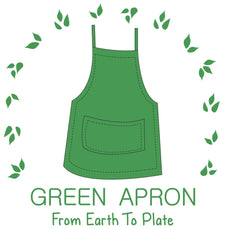
Dirty or White?

In a recent food exhibition I participated in, one question frequently asked by curious visitors who observed a mix of shapes and colours in the packets was- How do you intend to achieve consistency in taste and appearance of your dehydrated jackfruit?
While I ensure consistency in quality of my dehydrated jackfruit, regarding taste and appearance, I would explain that my product is subject to natural variations as fruits are found in several varieties in nature.
Absolute uniformity in colour and taste in products derived from nature is can only be achieved through added colours and flavours. I prefer to avoid using either.
Over the last few months I have come across several varieties of jackfruits- some with fleshy bulbs, some not so fleshy. Some with big seeds and some with small. Some with yellow pulp and some with red. I know of a farmer who nurtures more than a hundred varieties of jackfruit.
When I started discovering the world of edible fungi, I came across these big brown beautiful mushrooms called portobello, which is quite popular across Europe. In India, the most popular mushroom is white button also known by some as the pizza mushroom. One of the reasons brown is not as popular as white is that many are put off by the appearance. What is fascinating is that, portobello mushroom is just a mature form of button mushroom. Button mushrooms though often known as white button vary in colour from white to pale brown. The pale brown button mushrooms are just simply allowed to brown further and grow bigger. White or brown, young or mature, these mushrooms belong to the same species Agaricus bisporus.
Take the story of white rice. Rice after harvest is dehusked. This rice without the husk is known as brown rice. Then, the bran with all its nutrients is stripped from the brown grains in rice mills, and further polished to give a shiny white appearance. This white rice is what is widely preferred. In some places this white rice is further enriched with minerals and vitamins to replenish the nutrients lost during processing, before being packaged and sold. All this just to convert brown to white.
My work has taken me to farms, small towns, big cities, factories, research institutes amongst various places. During these visits through my interactions with other mothers, I learned that colostrum or the first milk, was at one time, considered to be unfit for newborns and hence discarded. This practise is still being followed by some communities as it is considered to be dirty and toxic for children, one of the reasons being it is yellow, heavy, thick and sticky.
However, scientific studies show that this milk is rich in protein, vitamins and maternal antibodies that help the newborn fight infections, and is recommended by WHO and UNICEF as the perfect food for a newborn.
It is true that we eat with our eyes first. However, a lot has been lost in making our food brighter, lighter, polished to appeal our eyes rather than our health.
